
sidusglacies
don't you want to go home?i'm afraid it's too far for me to reach
286 posts
Latest Posts by sidusglacies


texas// us-57

New from Tornado Titans!
@brettwrightphoto captured this nice bolt at sunset in North Dakota. That barn has probably had better days. #ndwx #weather #lightning #weather #rain #rainyweather #storms #cloud #cloudporn #clouds #nature_lover #nature #nature_photo #nature_seeker #natgeoadventure #natgeoyourshot #natgeotravelpic #landscapes #landscapelover #epicsky #sky #skyporn #supercell #thunderstorm #storm #stormchasing #instaclouds #tv_clouds #ig_stormclouds https://instagr.am/p/CRrtJ-dr_gb/

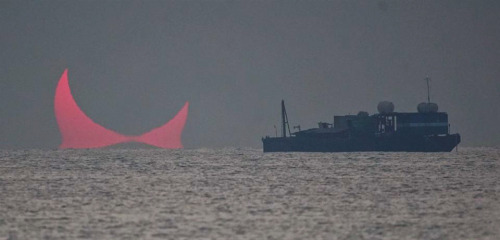

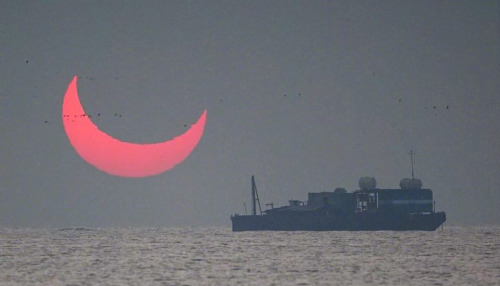
‘Devil Horns‘ Sunrise, annular solar eclipse in Qatar
by Elias Chasiotis on Dec. 26, 2019




What are Trans-Neptunian object?
A trans-Neptunian object (TNO), also written transneptunian object, is any minor planet or dwarf planet in the Solar System that orbits the Sun at a greater average distance than Neptune, which has a semi-major axis of 30.1 astronomical units (AU).
The first trans-Neptunian object to be discovered was Pluto in 1930. It took until 1992 to discover a second trans-Neptunian object orbiting the Sun directly, 15760 Albion. The most massive TNO known is Eris, followed by Pluto, Haumea, Makemake, and Gonggong. source
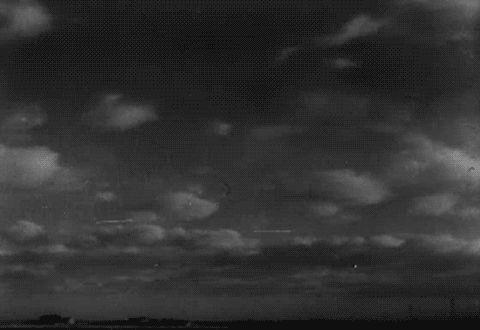
Le Tempestaire (Jean Epstein, 1947)

Obscured Sirius reveals Gaia 1 cluster by europeanspaceagency
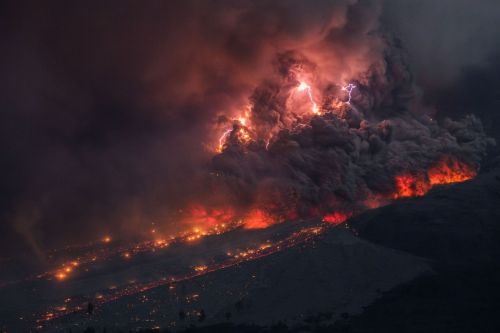
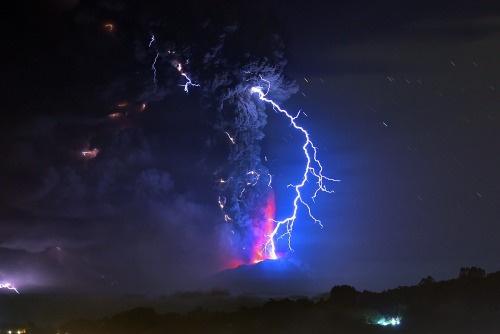
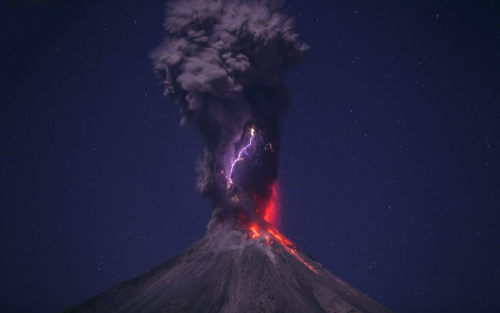
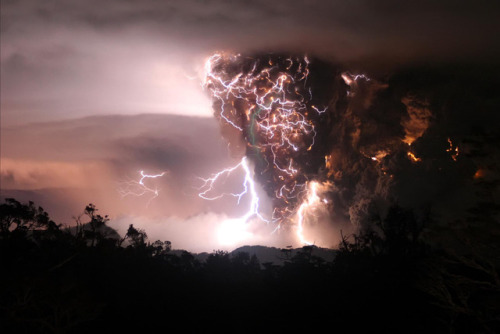
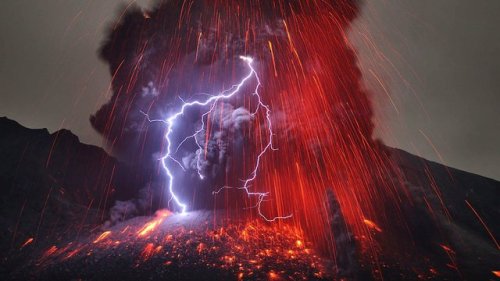
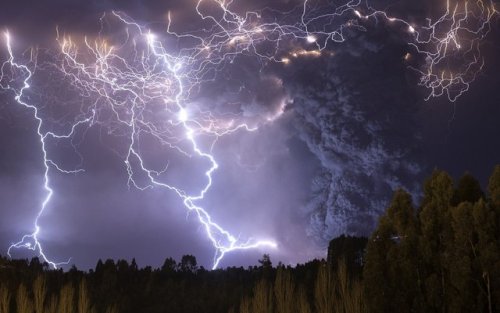
Dirty thunderstorm
A dirty thunderstorm (also volcanic lightning, thunder volcano) is a weather phenomenon that is related to the production of lightning in a volcanic plume.
A study in the journal Science indicated that electrical charges are generated when rock fragments, ash, and ice particles in a volcanic plume collide and produce static charges, just as ice particles collide in regular thunderstorms.
Volcanic eruptions are sometimes accompanied by flashes of lightning. However, this lightning doesn’t descend from storm clouds in the sky. It is generated within the ash cloud spewing from the volcano, in a process called charge separation.
source
images

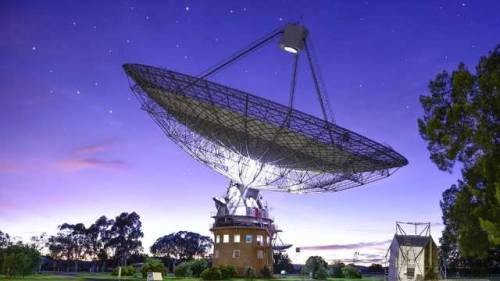
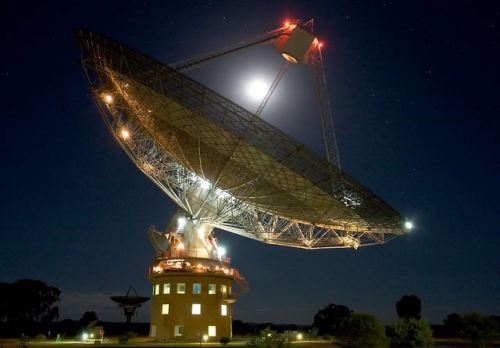


Parkes Observatory
The Parkes Observatory (also known informally as “The Dish”) is a radio telescope observatory, located 20 kilometres north of the town of Parkes, New South Wales, Australia. It was one of several radio antennae used to receive live television images of the Apollo 11 Moon landing. Its scientific contributions over the decades led the ABC to describe it as “the most successful scientific instrument ever built in Australia” after 50 years of operation.
The Parkes Observatory is run by the Commonwealth Scientific and Industrial Research Organisation (CSIRO), as part of the Australia Telescope National Facility (ATNF) network of radio telescopes. It is frequently operated together with other CSIRO radio telescopes, principally the array of six 22-metre (72 ft) dishes at the Australia Telescope Compact Array near Narrabri, and a single 22-metre (72 ft) dish at Mopra (near Coonabarabran), to form a very long baseline interferometry array. source


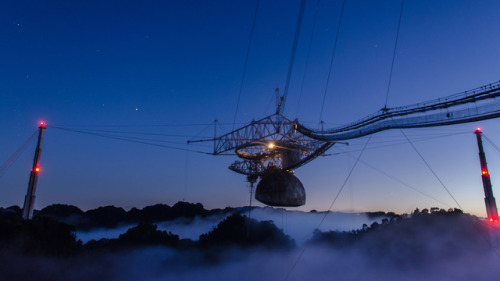
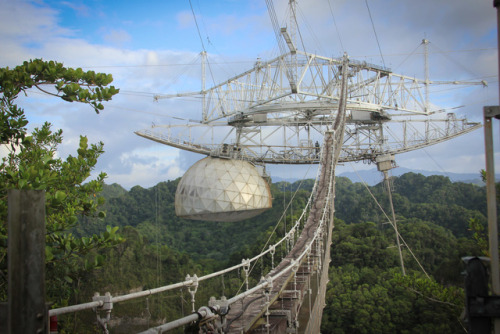

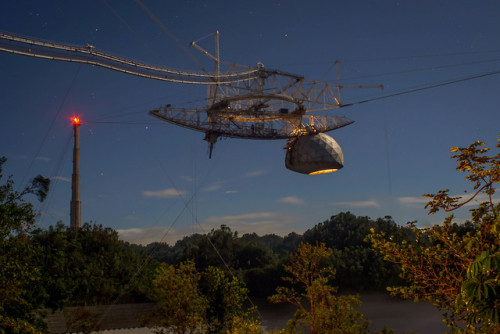
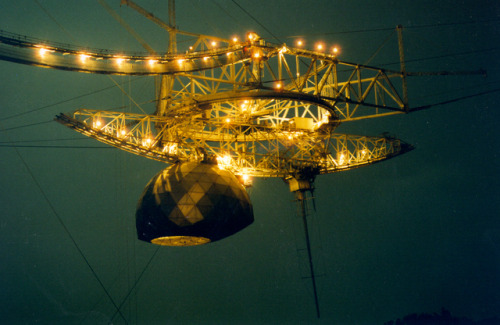
Arecibo Observatory
The Arecibo Observatory is a radio telescope in the municipality of Arecibo, Puerto Rico. This observatory is operated by University of Central Florida, Yang Enterprises and UMET, under cooperative agreement with the US National Science Foundation (NSF). The observatory is the sole facility of the National Astronomy and Ionosphere Center (NAIC), which is the formal name of the observatory. From its construction in the 1960s until 2011, the observatory was managed by Cornell University.
For more than 50 years, from its completion in 1963 until July 2016 when the Five hundred meter Aperture Spherical Telescope (FAST) in China was completed, the Arecibo Observatory’s 1,000-foot (305-meter) radio telescope was the world’s largest single-aperture telescope. It is used in three major areas of research: radio astronomy, atmospheric science, and radar astronomy.
Many scientific discoveries have been made with the observatory. On April 7, 1964, soon after it began operating, Gordon Pettengill’s team used it to determine that the rotation period of Mercury was not 88 days, as formerly thought, but only 59 days. In 1968, the discovery of the periodicity of the Crab Pulsar (33 milliseconds) by Lovelace and others provided the first solid evidence that neutron stars exist. (Crab pulsar sound by Arecibo Observatory)

In 1974, Hulse and Taylor discovered the first binary pulsar PSR B1913+16, an accomplishment for which they later received the Nobel Prize in Physics. In 1982, the first millisecond pulsar, PSR B1937+21, was discovered by Donald C. Backer, Shrinivas Kulkarni, Carl Heiles, Michael Davis, and Miller Goss. This object spins 642 times per second and, until the discovery of PSR J1748-2446ad in 2005, was identified as the fastest-spinning pulsar.
The Arecibo Message

In 1974, the Arecibo Message, an attempt to communicate with potential extraterrestrial life, was transmitted from the radio telescope toward the globular cluster Messier 13, about 25,000 light-years away. The 1,679 bit pattern of 1s and 0s defined a 23 by 73 pixel bitmap image that included numbers, stick figures, chemical formulas and a crude image of the telescope. source

Charon, moon of Pluto, observed by NASA's New Horizons probe just before closest approach on this day in 2015. (It flew within 12,500 km of Pluto and as close as 27,000 km to Charon.)
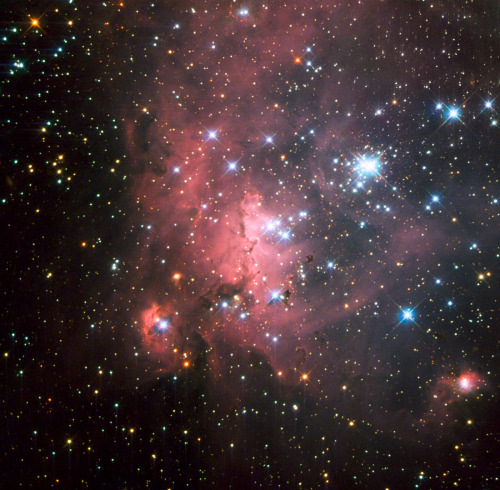
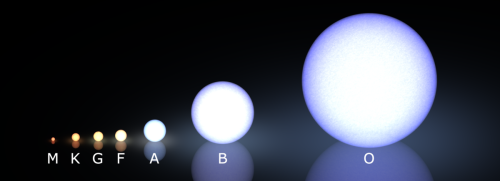

OB star
OB stars are hot, massive stars of spectral types O or early-type B that form in loosely organized groups called OB associations. They are short lived, and thus do not move very far from where they formed within their life. During their lifetime, they will emit much ultraviolet radiation. This radiation rapidly ionizes the surrounding interstellar gas of the giant molecular cloud, forming an H II region or Strömgren sphere. (source)
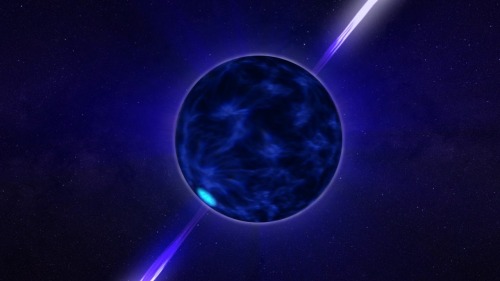
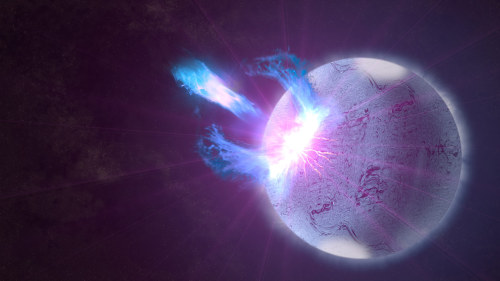
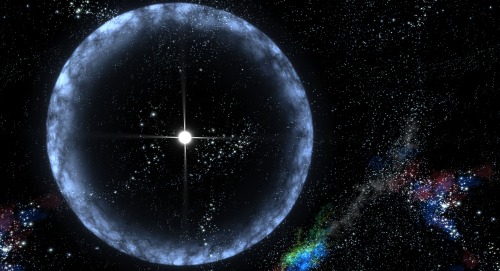
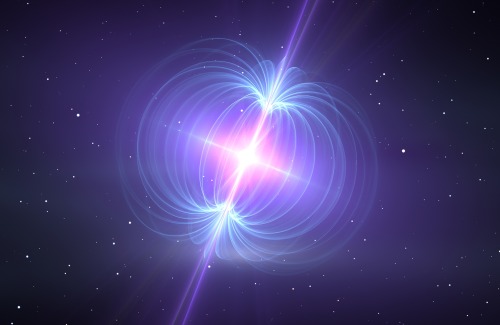
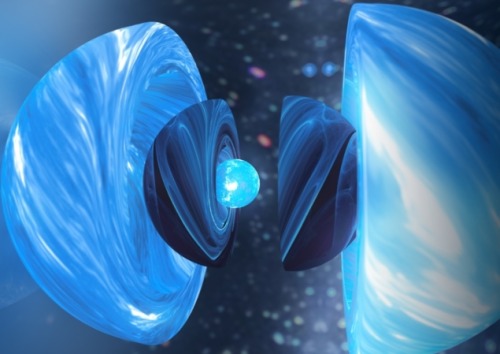
Starquakes
Sometimes a neutron star will undergo a glitch, a sudden small increase of its rotational speed or spin up. Glitches are thought to be the effect of a starquake—as the rotation of the neutron star slows, its shape becomes more spherical. Due to the stiffness of the “neutron” crust, this happens as discrete events when the crust ruptures, creating a starquake similar to earthquakes. After the starquake, the star will have a smaller equatorial radius, and because angular momentum is conserved, its rotational speed has increased.
Starquakes occurring in magnetars, with a resulting glitch, is the leading hypothesis for the gamma-ray sources known as soft gamma repeaters.
Recent work, however, suggests that a starquake would not release sufficient energy for a neutron star glitch; it has been suggested that glitches may instead be caused by transitions of vortices in the theoretical superfluid core of the neutron star from one metastable energy state to a lower one, thereby releasing energy that appears as an increase in the rotation rate. (source)



Blanet: A new class of planet that could form around black holes
The dust clouds around supermassive black holes are the perfect breeding ground for an exotic new type of planet.
Blanets are fundamentally similar to planets; they have enough mass to be rounded by their own gravity, but are not massive enough to start thermonuclear fusion, just like planets that orbit stars. In 2019, a team of astronomers and exoplanetologists showed that there is a safe zone around a supermassive black hole that could harbor thousands of blanets in orbit around it.
The generally agreed theory of planet formation is that it occurs in the protoplanetary disk of gas and dust around young stars. When dust particles collide, they stick together to form larger clumps that sweep up more dust as they orbit the star. Eventually, these clumps grow large enough to become planets.
A similar process should occur around supermassive black holes. These are surrounded by huge clouds of dust and gas that bear some similarities to the protoplanetary disks around young stars. As the cloud orbits the black hole, dust particles should collide and stick together forming larger clumps that eventually become blanets.
The scale of this process is vast compared to conventional planet formation. Supermassive black holes are huge, at least a hundred thousand times the mass of our Sun. But ice particles can only form where it is cool enough for volatile compounds to condense.
This turns out to be around 100 trillion kilometers from the black hole itself, in an orbit that takes about a million years to complete. Birthdays on blanets would be few and far between!
An important limitation is the relative velocity of the dust particles in the cloud. Slow moving particles can collide and stick together, but fast-moving ones would constantly break apart in high-speed collisions. Wada and co calculated that this critical velocity must be less than about 80 meters per second.
source


What is this dark spot in the center of the image?
This NASA/ESA Hubble Space Telescope image features the star cluster Trumpler 14. One of the largest gatherings of hot, massive and bright stars in the Milky Way, this cluster houses some of the most luminous stars in our entire galaxy.
The prominent dark patch, close to the centre of the cluster is a so called Bok globule: this is an isolated and relatively small dark nebula, containing dense dust and gas. These objects are still subjects of intense research as their structure and density remains somewhat a mystery.
Credit: NASA & ESA, Jesús Maíz Apellániz (Centro de Astrobiología, CSIC-INTA, Spain)

Umbriel as seen by Voyager 2 in 1986. At the top is the large crater Wunda, whose walls enclose a ring of bright material.
Credit: NASA
Venus has LOCKED tectonic plates??? How does that work? How are they even counted as individual plates if it’s the tectonic equivalent of Pangea?
it's not so much that Venus's tectonic plates are locked, it's more that it never had them in the first place!
which is a major surprise, actually, because Venus is the most Earth-like of the other planets in our solar system.
surprise?

"what," you may say, flailing in consternation, "about Mars?? why are we trying to colonize Mars if Venus is more Earth-like???"
and it's a good question! Venus IS technically more Earth-like in the sense that it's right next door, is a solid 80% the size of Earth, and has both a working atmosphere and a liquid mantle composed of molten rock, BUT- it's also important to note that Venus is the hottest planet in the solar system and it rains boiling sulfuric acid at almost all times! our first probes to the damn place actually melted. MELTED.
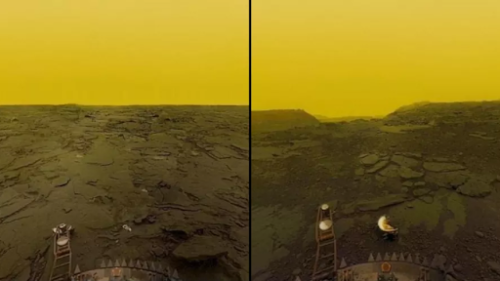
this is what Hell looks like.
BUT ANYWAY so Venus is the planet in our solar system that's the MOST physically similar to Earth, our dear mother who does not rain boiling sulfuric acid on our heads hardly at all ever, so it's kind of a shock that its geology is COMPLETELY FUCKING DIFFERENT.

see, Earth's outer crust is broken up into a series of mind-breakingly-massive tectonic plates that sort of skid around on top of the liquid mantle, slowly drifting in different directions driven by Earth's rotation and bonking into each other randomly like a 300-million-year-long Pinball tournament!
but on Venus, the entire outer crust is a single solid piece sitting on top of the liquid mantle, like the peel of an orange.

though not as good for you. because of the whole Boiling Acid thing.
and contrary to what you might think, this actually makes Venus a VERY VIOLENT place! the outer crust twists and deforms slightly as the liquid mantle spins under it, like a water balloon being flung repeatedly against a wall by a small child, but all of that force can't really be dispersed because the crust is a single solid piece of rigid rock!

so what happens is that this force builds and builds and BUILDS until Venus can't take the strain anymore and has a very volcanic tantrum about it.

unlike the rest of the solar system, the surface of Venus is made of relatively new and entirely volcanic rock- because the entire planet is basically having a planet-wide eruption event at all times, with multiple huge volcanos just spewing gigantic amounts of liquid rock everywhere like it's their damn job, to the point where Venus is just getting resurfaced like a McDonalds parking lot every epoch or so.
aren't you glad Earth doesn't do this? I am SO glad Earth doesn't do this.

(much, anyway)
uh anyway that's why we're trying to colonize Mars instead, and why plate tectonics are a GOOD thing! thanks for coming to my TED talk bye
![The Eight Planets Of Our Solar System (and The Dwarf Planet Pluto) Image Credits: [x] / NASA](https://64.media.tumblr.com/254db3e7b6d7c9aba30012dd5bef55ab/tumblr_ngr4saUA4s1r6mt8go1_r4_500.png)
![The Eight Planets Of Our Solar System (and The Dwarf Planet Pluto) Image Credits: [x] / NASA](https://64.media.tumblr.com/9b36e80a8801d1ce79804b8f592834cb/tumblr_ngr4saUA4s1r6mt8go2_500.png)
![The Eight Planets Of Our Solar System (and The Dwarf Planet Pluto) Image Credits: [x] / NASA](https://64.media.tumblr.com/40d82a05ee3b6cd89020241cdfd4c571/tumblr_ngr4saUA4s1r6mt8go3_500.png)
![The Eight Planets Of Our Solar System (and The Dwarf Planet Pluto) Image Credits: [x] / NASA](https://64.media.tumblr.com/188dd05ddbfe5f4e4968c9a7475640c9/tumblr_ngr4saUA4s1r6mt8go4_500.png)
![The Eight Planets Of Our Solar System (and The Dwarf Planet Pluto) Image Credits: [x] / NASA](https://64.media.tumblr.com/f04e1b4d1e0cc136170b5f21f9c74396/tumblr_ngr4saUA4s1r6mt8go6_500.png)
![The Eight Planets Of Our Solar System (and The Dwarf Planet Pluto) Image Credits: [x] / NASA](https://64.media.tumblr.com/d094d6d12ffb8b88b680bdc5bd2c3a3d/tumblr_ngr4saUA4s1r6mt8go5_500.png)
![The Eight Planets Of Our Solar System (and The Dwarf Planet Pluto) Image Credits: [x] / NASA](https://64.media.tumblr.com/8d109f5968bcdae1ae932ffa88a87786/tumblr_ngr4saUA4s1r6mt8go7_500.png)
![The Eight Planets Of Our Solar System (and The Dwarf Planet Pluto) Image Credits: [x] / NASA](https://64.media.tumblr.com/58a59d4e5ce0935862fd96c136102c1c/tumblr_ngr4saUA4s1r6mt8go8_500.png)
![The Eight Planets Of Our Solar System (and The Dwarf Planet Pluto) Image Credits: [x] / NASA](https://64.media.tumblr.com/ba05d88a7842183b9ea4a8ef52f91236/tumblr_ngr4saUA4s1r6mt8go9_r4_500.png)
The eight planets of our solar system (and the dwarf planet Pluto) image credits: [x] / NASA
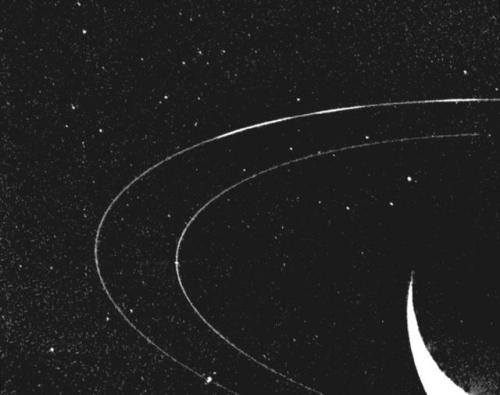
Image of the rings of Neptune captured by the space probe voyager 2 in August 1989.
Credit: NASA/JPL

the saline water from your mouth | © víctor m. alonso
"Give me the essence of your nights,
give me the saline water from your mouth,"
"Dame la esencia de tus noches,
dame el agua salina de tu boca,"
[© víctor m. alonso | from the poem 'amor']

Winds on Jupiter: 620 km/h
Winds on Saturn: 1800 km/h
Winds on Neptune: 2400 km/h
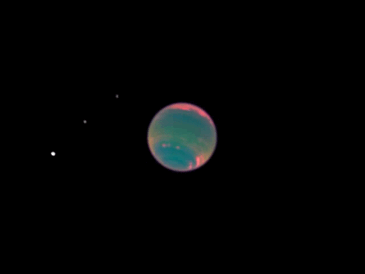
Neptune and its moons (Proteus, Larissa, Despina and Galatea)
Credit: NASA / Hubble (infrared)
Indonesian photographer guanarto song lined up with sacred mt merapi for the aquarids meteor shower and nailed this beauty on the night of May 27, 2021.

What drives auroras on Saturn? To help find out, scientists have sorted through hundreds of infrared images of Saturn taken by the Cassini spacecraft for other purposes, trying to find enough aurora images to correlate changes and make movies. Once made, some movies clearly show that Saturnian auroras can change not only with the angle of the Sun, but also as the planet rotates. Furthermore, some auroral changes appear related to waves in Saturn's magnetosphere likely caused by Saturn's moons. Pictured here, a false-colored image taken in 2007 shows Saturn in three bands of infrared light. The rings reflect relatively blue sunlight, while the planet itself glows in comparatively low energy red. A band of southern aurora in visible in green. In has recently been found that auroras heat Saturn's upper atmosphere. Understanding Saturn's auroras is a path toward a better understanding of Earth's auroras.
Image Credit: NASA, Cassini, VIMS Team, U. Arizona, U. Leicester, JPL, ASI


Lenticular Clouds
Fiordo Última Esperanza, Magallanes & La Antartica Chilena.






























